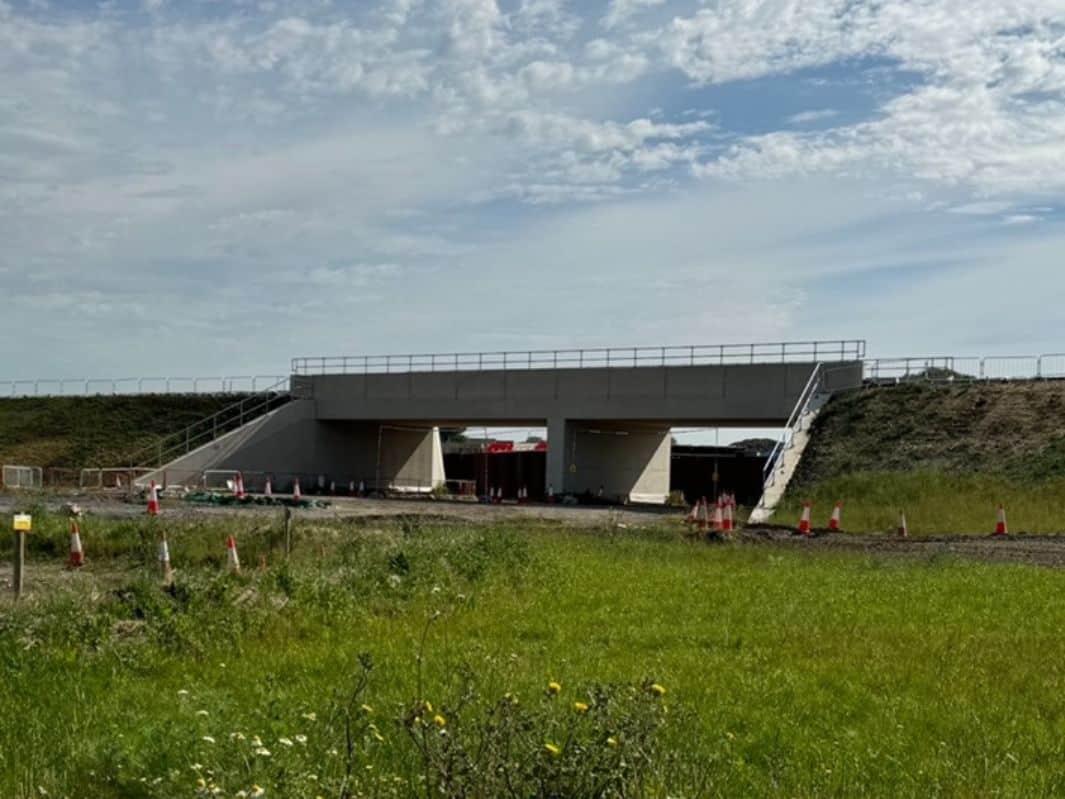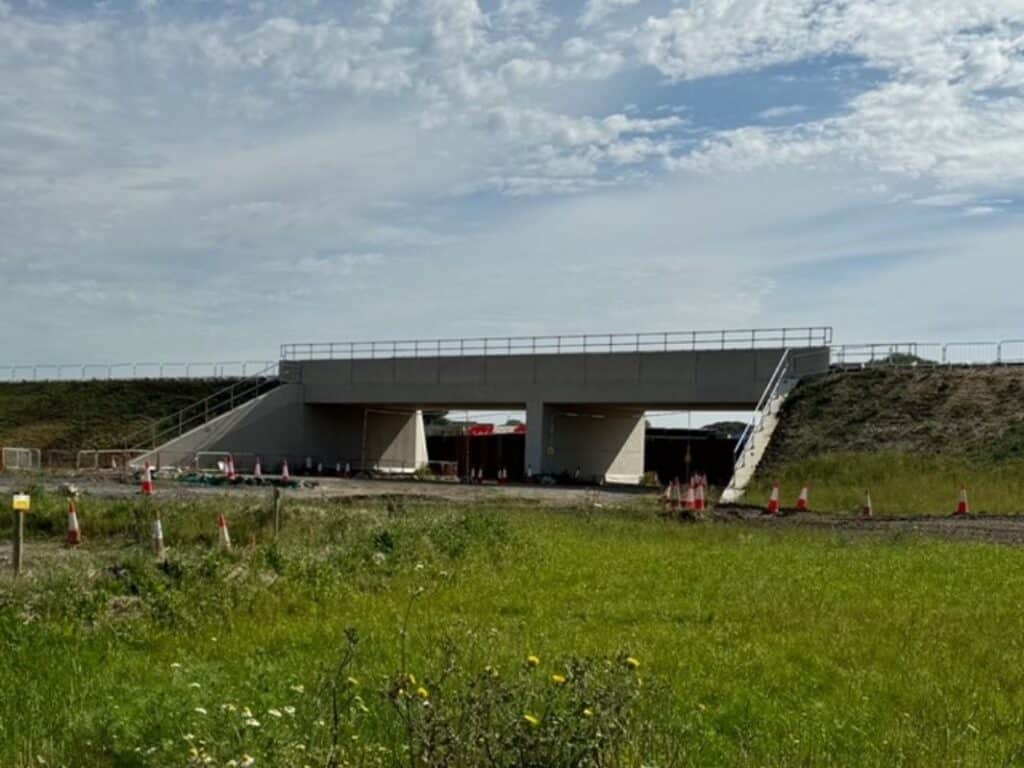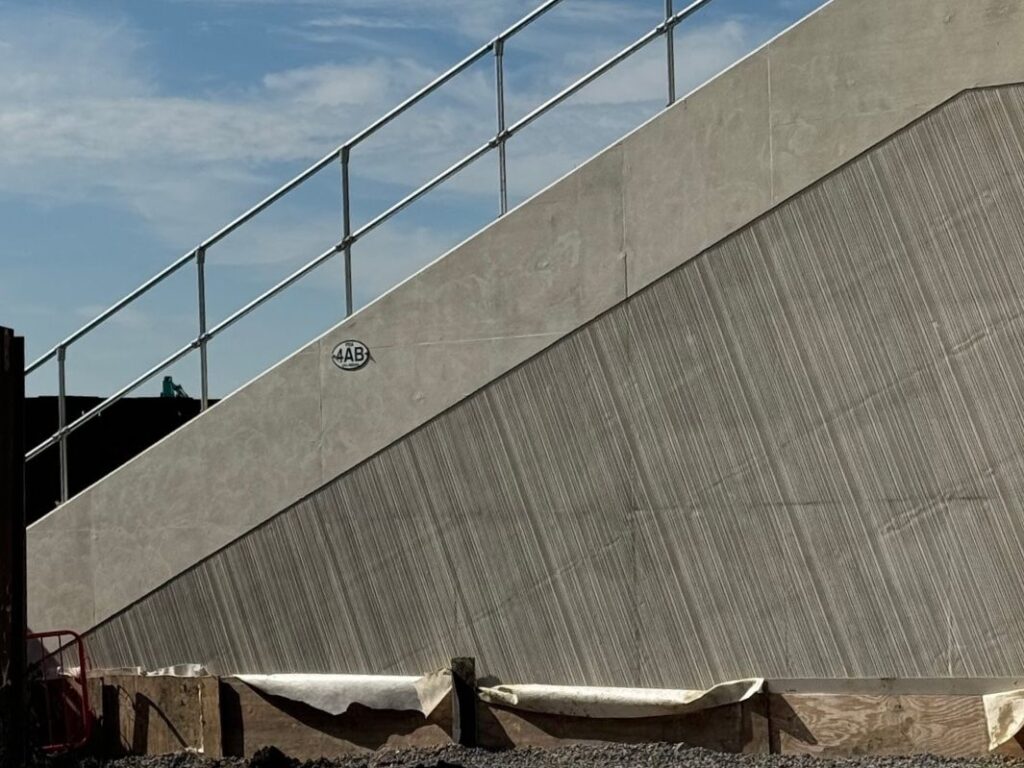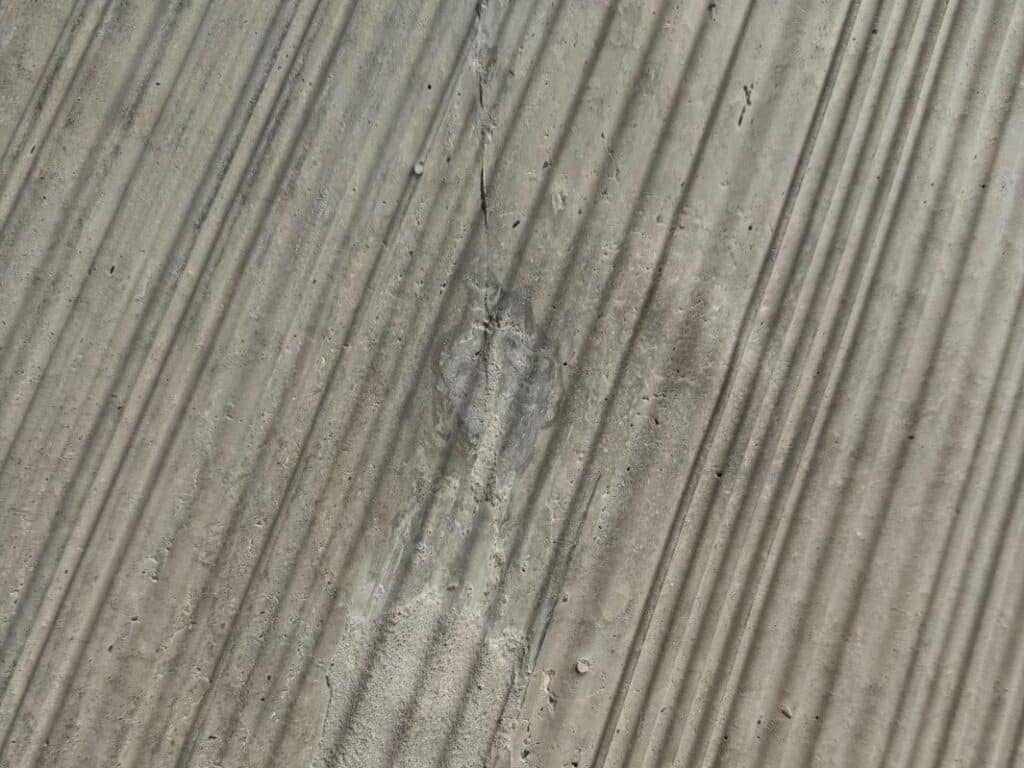
Betonsanierung der HS2-Eisenbahnbrücke kurz vor der Fertigstellung
Die Eisenbahnbrücke des HS2-Netzes, ein entscheidender Teil der neuen Hochgeschwindigkeitsstrecke, steht kurz vor der Fertigstellung, wobei die innovative Verwendung von Recyclingbeton eine Herausforderung darstellte. Diese umweltfreundliche Initiative ist zwar wegen ihrer Vorteile für die Umwelt lobenswert, stellte aber auch erhebliche Hürden dar, insbesondere bei der Wahrung der Einheitlichkeit von Farbe und Textur des Betons – Schlüsselfaktoren sowohl für die Ästhetik als auch für die strukturelle Integrität der Brücke.

Schon zu Beginn der Bauarbeiten wurde deutlich, dass mehrere Abschnitte der Brücke Betonmängel aufwiesen, so dass eine spezielle Sanierung erforderlich war, um sicherzustellen, dass die Brücke den Sicherheits- und Dauerhaftigkeitsstandards entspricht. Die Aufgabe, diese Mängel zu beheben, fiel Structural Repairs zu, einem Unternehmen mit großer Erfahrung in der Betonsanierung.
Identifizierung der Herausforderungen des Wiederaufbaus von Beton
Die wichtigsten Themen waren:
- Defekter Beton: Bestimmte Abschnitte der Brücke wiesen sichtbare Mängel auf, die die strukturelle Sicherheit zu untergraben drohten, wenn sie nicht behoben wurden.
- Recycelter Beton – eine Herausforderung: Die Entscheidung, recycelten Beton zu verwenden, war zwar ökologisch nachhaltig, brachte aber Schwierigkeiten mit sich, wenn es darum ging, ein einheitliches Erscheinungsbild des gesamten Bauwerks zu erreichen. Diese Uneinheitlichkeit könnte die optische Attraktivität der Brücke beeinträchtigen und aufgrund der unterschiedlichen Materialeigenschaften möglicherweise ihre Lebensdauer verkürzen.

Betonsanierung: Lösungen und Umsetzung
Structural Repairs übernahm das Projekt mit einer klaren Strategie, die sich nicht nur auf die Beseitigung der Mängel konzentrierte, sondern auch darauf, dass die Reparaturen von der ursprünglichen Struktur nicht zu unterscheiden waren. Der Sanierungsprozess umfasste:
- Gründliche Bewertung: Es wurde eine detaillierte Bewertung der gesamten Brücke durchgeführt, um das Ausmaß und die spezifische Art jedes Mangels zu ermitteln. Dieser entscheidende erste Schritt stellte sicher, dass alle nachfolgenden Sanierungsmaßnahmen zielgerichtet und effektiv waren.
- Maßgeschneiderte Farbanpassung: Die Firma entwickelte ein ausgeklügeltes Verfahren zur Farbanpassung. Dieser sorgfältige Ansatz stellte sicher, dass sich die reparierten Abschnitte nahtlos in das umgebende Material einfügten und die gesamte Brücke ein einheitliches Aussehen erhielt.
- Fachmännische Instandsetzung: Unter Verwendung fortschrittlicher Techniken hat Structural Repairs die problematischen Bereiche erneuert und dabei sowohl die ästhetischen als auch die strukturellen Eigenschaften der Brücke verbessert. Dadurch wurden nicht nur die unmittelbaren Probleme behoben, sondern auch die Langlebigkeit und Beständigkeit des Bauwerks verbessert.

Ergebnis der Sanierungs- und Betoninstandsetzungsarbeiten
Die Intervention von Structural Repairs hat zu mehreren positiven Resultaten geführt:
- Verbesserte strukturelle Integrität: Die kritischen strukturellen Probleme der Brücke wurden effektiv angegangen, um sicherzustellen, dass sie alle Sicherheits- und Dauerhaftigkeitsstandards erfüllt.
- Nahtloses Erscheinungsbild: Die speziellen Techniken, die bei der Farbanpassung und dem Refacing zum Einsatz kamen, führten zu einer einheitlichen und ästhetisch ansprechenden Oberfläche, die die optische Integrität der Brücke bewahrt.
- Nachhaltige Praktiken: Die Verwendung von recyceltem Beton wurde beibehalten, was das Engagement für ökologische Nachhaltigkeit unterstreicht, ohne Kompromisse bei der strukturellen Qualität oder den ästhetischen Standards einzugehen.
Fazit
Während sich die HS2-Eisenbahnbrücke ihrer Fertigstellung nähert, zeigt die Arbeit von Structural Repairs nicht nur die Komplexität, die mit der Verwendung von recycelten Materialien beim Bau verbunden ist, sondern auch die innovativen Lösungen, die aus solchen Herausforderungen entstehen können. Die fachmännische Behandlung der Betonschäden hat dafür gesorgt, dass die Brücke als dauerhafter, sicherer und optisch ansprechender Teil der britischen Verkehrsinfrastruktur dienen wird, und das alles unter Einhaltung nachhaltiger Praktiken. Dieses Projekt ist ein Beweis dafür, dass es möglich ist, nachhaltige Baumethoden mit hohen technischen Standards zu kombinieren.